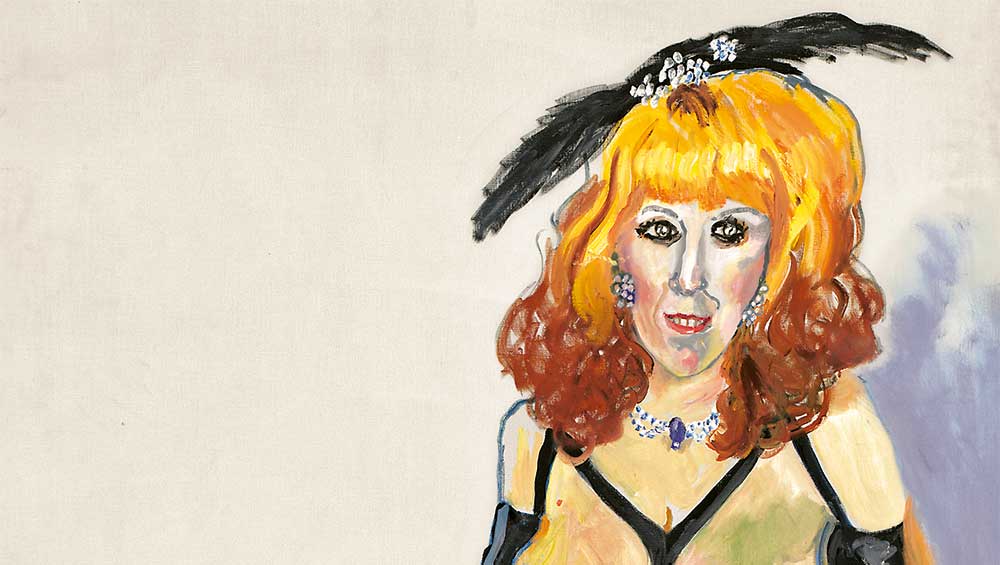
Alice Neel, Annie Sprinkle, 1982 (detail). © The Estate of Alice Neel. Courtesy The Estate of Alice Neel.
Barbican Art Gallery, London
16 February – 21 May 2023
by BETH WILLIAMSON
Another exhibition, yet another overlooked female artist. They are coming thick and fast this season and it is no surprise that the talented American artist Alice Neel (1900-84) is among them. Art was a necessity for Neel and even a kind of therapy at different times in her life. In 1931, following the earlier death of her youngest daughter and her husband’s move to Havana with their other daughter, Neel moved to Greenwich Village, submerging herself in its bohemian spirit and painting intimate portraits of friends and lovers. This intimacy, something that never leaves Neel’s work, is conveyed in the exhibition’s accompanying book of the same name. This is not so much a catalogue as a small-format publication. The exhibition’s curator and the book’s editor, Eleanor Nairne, said it was designed so it could be read in bed and that makes perfect sense.
So, what was Neel painting and why? While much of the art world was moving relentlessly from figuration to abstraction, Neel stuck resolutely with the human figure as her subject. Although this made her deeply unfashionable and lacking critical recognition, Neel clung to her conviction that it was people who mattered most. “I’m not against abstraction,” she said. “Do you know what I’m against? Saying that man himself has no importance.” With a keen eye and deep curiosity, she tackled her subjects fearlessly. Those subjects – pregnant women, black and Puerto Rican children and civil rights activists among them – may not have been typical, but she approached them with candour and an unflinching eye that seemed to lay bare their souls. As one sitter explained: “I always said she was looking at you like an X-ray, and you were sitting up there laughing at her jokes while she was seeing right through you.”
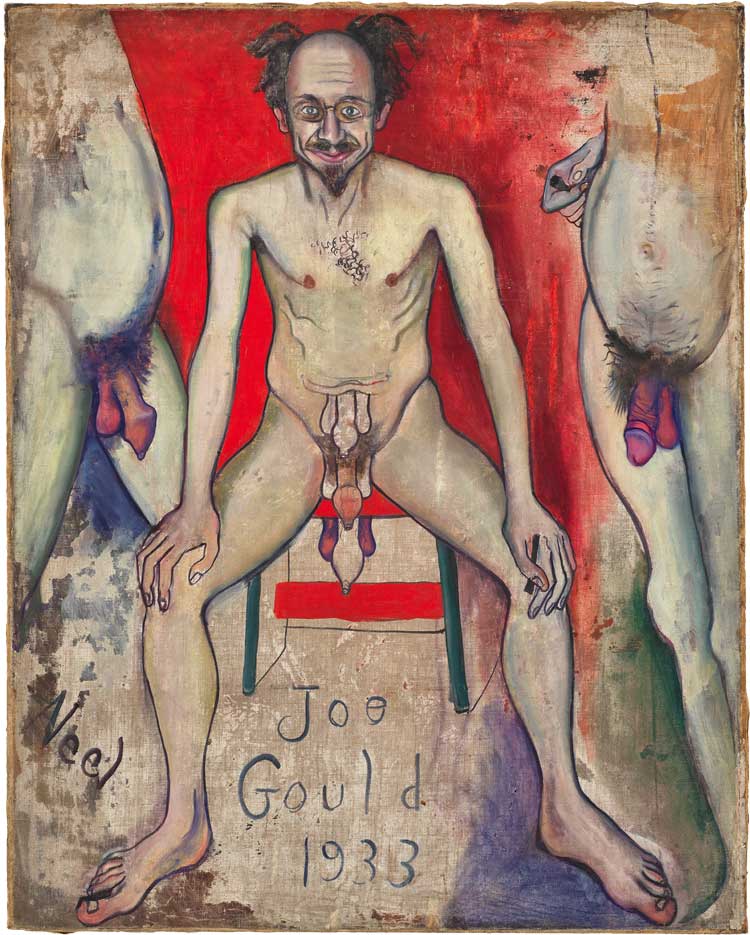
Alice Neel, Joe Gould, 1933. © The Estate of Alice Neel. Courtesy The Estate of Alice Neel.
Among the many paintings of poets, critics and characters she made were those of her lovers John Rothschild and Kenneth Doolittle, the bohemian Joe Gould, friends Nadya and Nona, and the artist Ethel Ashton. Other portraits included an emotionally exposed Andy Warhol, the poet and photographer Gerard Malanga, and the art critic Frank O’Hara. Neel was not afraid to portray the full gamut of humanity, including the fluid nature of human gender and sexuality.
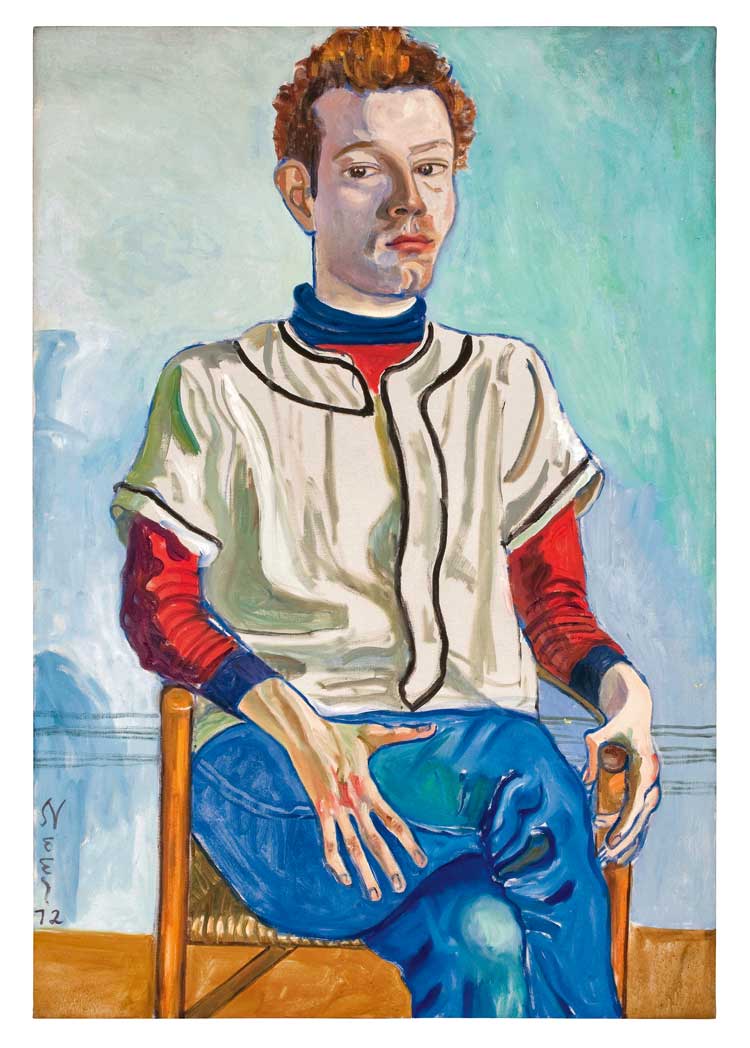
Alice Neel. Jackie Curtis as a Boy, 1972. © The Estate of Alice Neel. Courtesy The Estate of Alice Neel.
In Jackie Curtis as a Boy (1972), she paints the influential Curtis in jeans and a baseball top, in contrast to her earlier portrait of Curtis in drag and emphasising gender as a space of play. In 1982, Neel painted the performer and sex activist Annie Sprinkle, a provocative portrait that shimmers with energy.
In her portraits of sitters from Spanish Harlem, Neel shunned the privileged white sitter in order to convey the inequalities she recognised in the lives of black and Puerto Rican sitters. Georgie Arce was a young boy when Neel first met and painted him, and their friendship endured despite Arce’s later conviction for murder. One of the most poignant images in this exhibition is her tender painting of Carlos Negrón while he was recovering from tuberculosis.
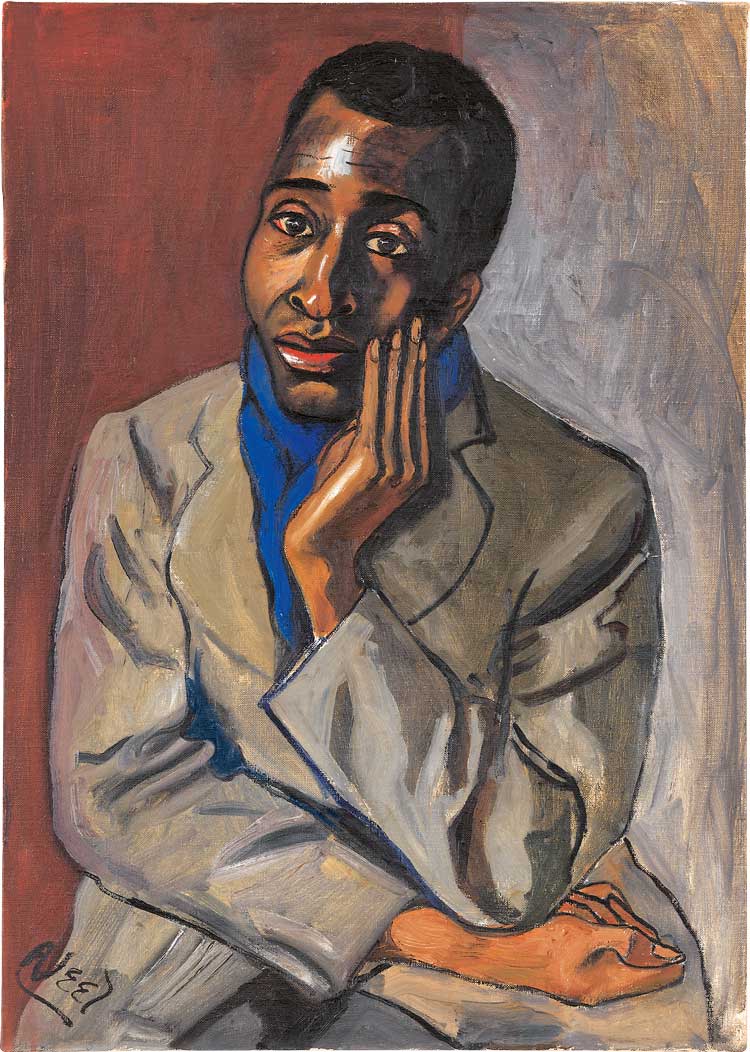
Alice Neel, Harold Cruse, c1950. © The Estate of Alice Neel. Courtesy The Estate of Alice Neel.
Her 1950 painting of the black thinker and activist Harold Cruse shows an intelligent figure, but one who looks weary, perhaps as a result of the number of unskilled short-term jobs he undertook at that point. Later, Cruse would become a professor at the University of Michigan.
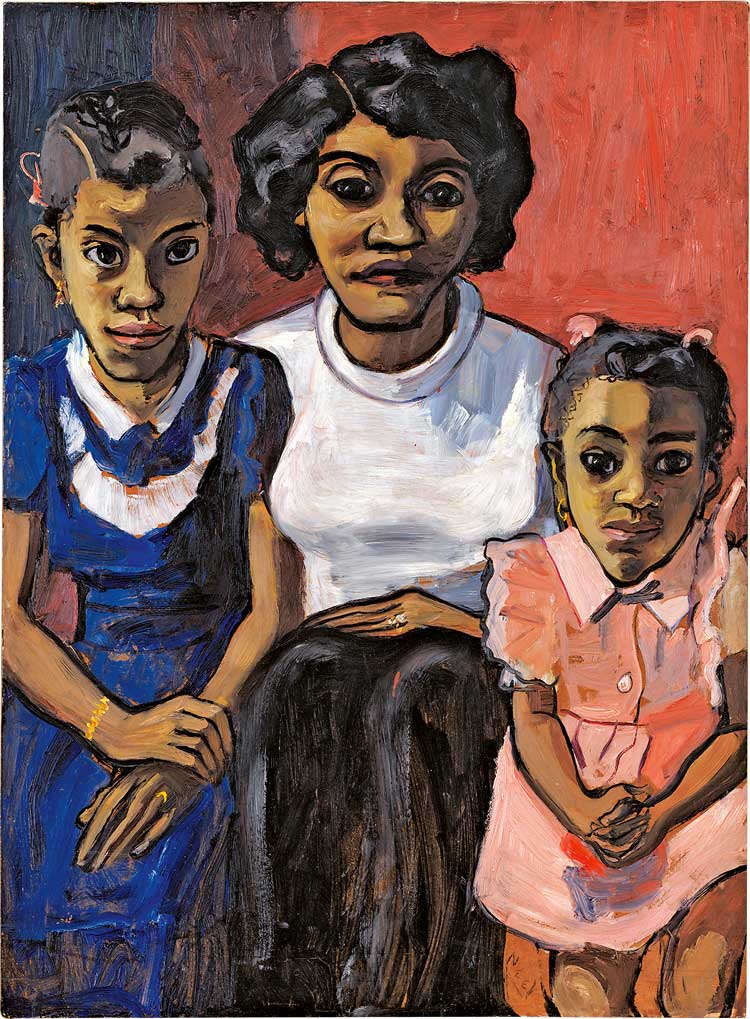
Alice Neel, Black Spanish-American Family, 1950. © The Estate of Alice Neel. Courtesy The Estate of Alice Neel.
Neel’s portraits of mothers abound in this exhibition. Even in a very early example in this exhibition, Mother and Child (1926), painted in Havana, Neel takes up the theme with fierce intent. There are the families of Spanish Harlem in The Spanish Family (1943) and Black Spanish American Family (1950). There are pregnant mothers in works such as Pregnant Julie and Algis (1967) and Margaret Evans Pregnant (1978). There are breastfeeding mothers such as Carmen and Judy (1972). There are intellectual mothers too – Linda Nochlin and Daisy (1973). The drawings of weary and downtrodden mothers in Spanish Mother and Child (1942) and Mother with Children (1943) could not be more emotive. This is about recognising and valuing mothers in their daily lives as they care for children under all kinds of circumstances. For Neel, painting people is about valuing them as subjects whoever they are. It is about showing them as they are, without any artifice or pretence.
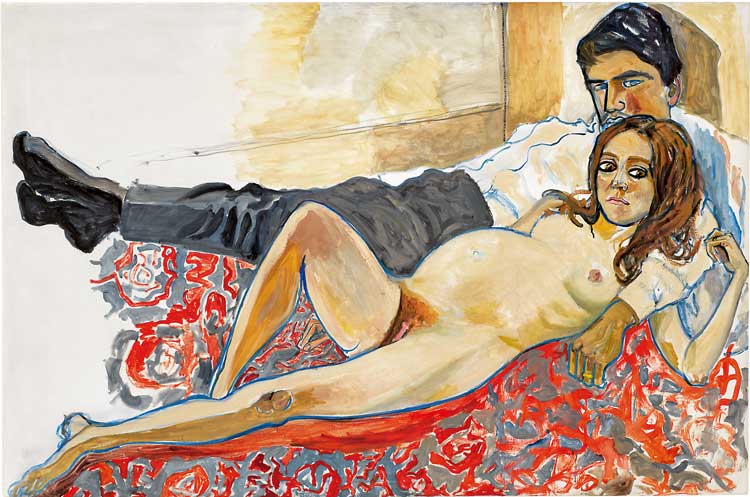
Alice Neel, Pregnant Julie and Algis, 1967. © The Estate of Alice Neel. Courtesy The Estate of Alice Neel.
What is so astonishing about these portraits is just how vulnerable (and how at ease with that vulnerability) Neel’s subjects appear to be. She said she wanted to “reveal the inequalities and pressures as shown in the psychology of the people” she painted. And that’s precisely it. In the midst of her own precarious existence and hardships, she was determined to bear witness to the hardships being experienced by most Americans in the 1940s and 50s. For this card-carrying member of the US Communist party, painting her friends and neighbours was a political act.
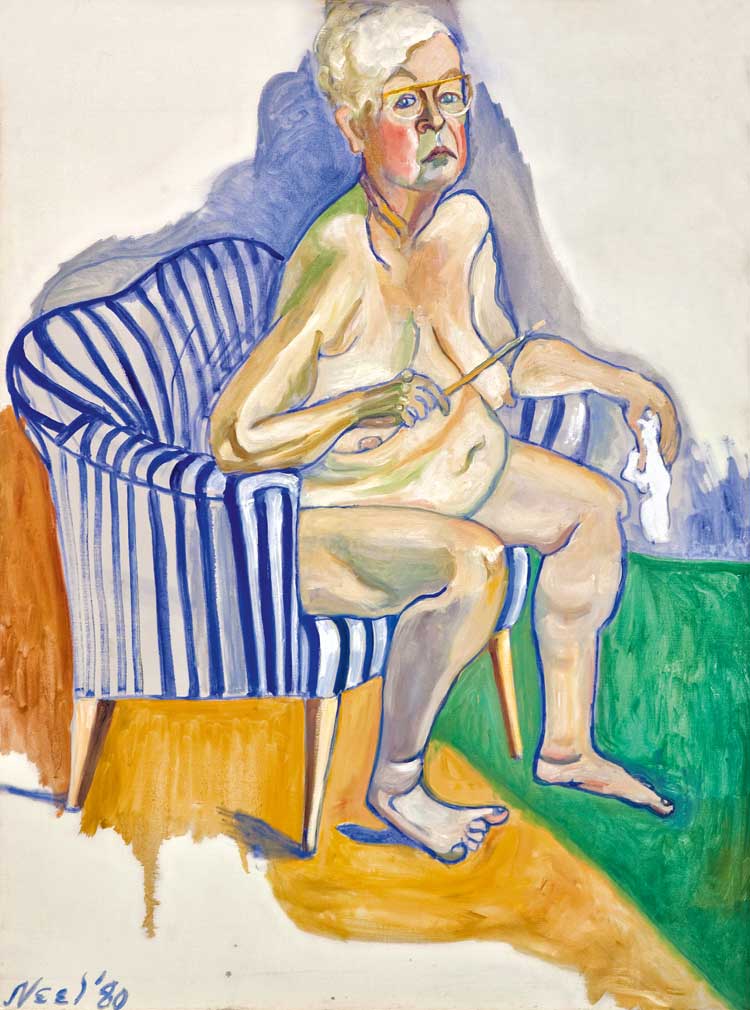
Alice Neel, Self-Portrait, 1980. © The Estate of Alice Neel. Courtesy The Estate of Alice Neel.
Neel was a painter who had the desire and the facility to tell it as it is. It was 1980 by the time she completed her first painted self-portrait, the result of five years of effort. Neel, then in her 80s, presents her ageing body unapologetically. She said: “All my life I wanted to do a nude self-portrait, but I put off till now when people would accuse me of insanity rather than vanity.” She was right about that because critics have attacked her self-portrait in this exhibition. If Neel’s depiction of her saggy breasts, flabby tummy and grey hair offends her critics, I don’t think she would have batted an eyelid. This is Neel in all her glory, raw, honest and simply marvellous.
• Alice Neel: Hot Off the Griddle edited by Eleanor Nairne, published by Prestel, is out in the UK on 21 March 2023 and in the US on 11 April 2023, price £24.99/ $29.95.